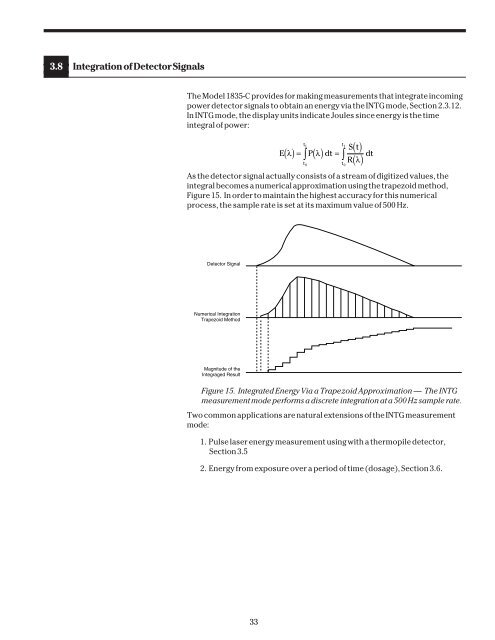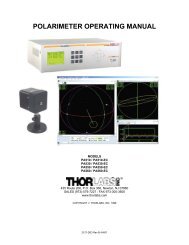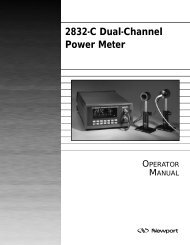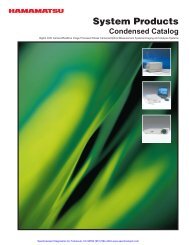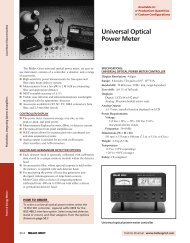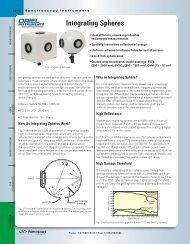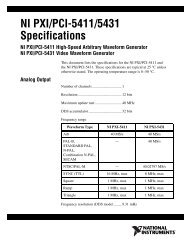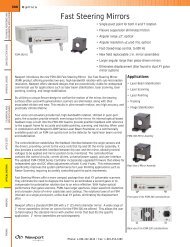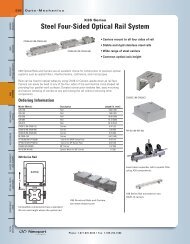Model 1835-C - Newport Corporation
Model 1835-C - Newport Corporation
Model 1835-C - Newport Corporation
Create successful ePaper yourself
Turn your PDF publications into a flip-book with our unique Google optimized e-Paper software.
3.8 Integration of Detector Signals<br />
The <strong>Model</strong> <strong>1835</strong>-C provides for making measurements that integrate incoming<br />
power detector signals to obtain an energy via the INTG mode, Section 2.3.12.<br />
In INTG mode, the display units indicate Joules since energy is the time<br />
integral of power:<br />
t1<br />
E λ P λ dt<br />
t0<br />
t1<br />
( )= ∫ ( ) = ∫<br />
t0<br />
()<br />
( )<br />
St<br />
R λ<br />
As the detector signal actually consists of a stream of digitized values, the<br />
integral becomes a numerical approximation using the trapezoid method,<br />
Figure 15. In order to maintain the highest accuracy for this numerical<br />
process, the sample rate is set at its maximum value of 500 Hz.<br />
dt<br />
Detector Signal<br />
Numerical Integration<br />
Trapezoid Method<br />
Magnitude of the<br />
Integraged Result<br />
Figure 15. Integrated Energy Via a Trapezoid Approximation — The INTG<br />
measurement mode performs a discrete integration at a 500 Hz sample rate.<br />
Two common applications are natural extensions of the INTG measurement<br />
mode:<br />
1. Pulse laser energy measurement using with a thermopile detector,<br />
Section 3.5<br />
2. Energy from exposure over a period of time (dosage), Section 3.6.<br />
33


